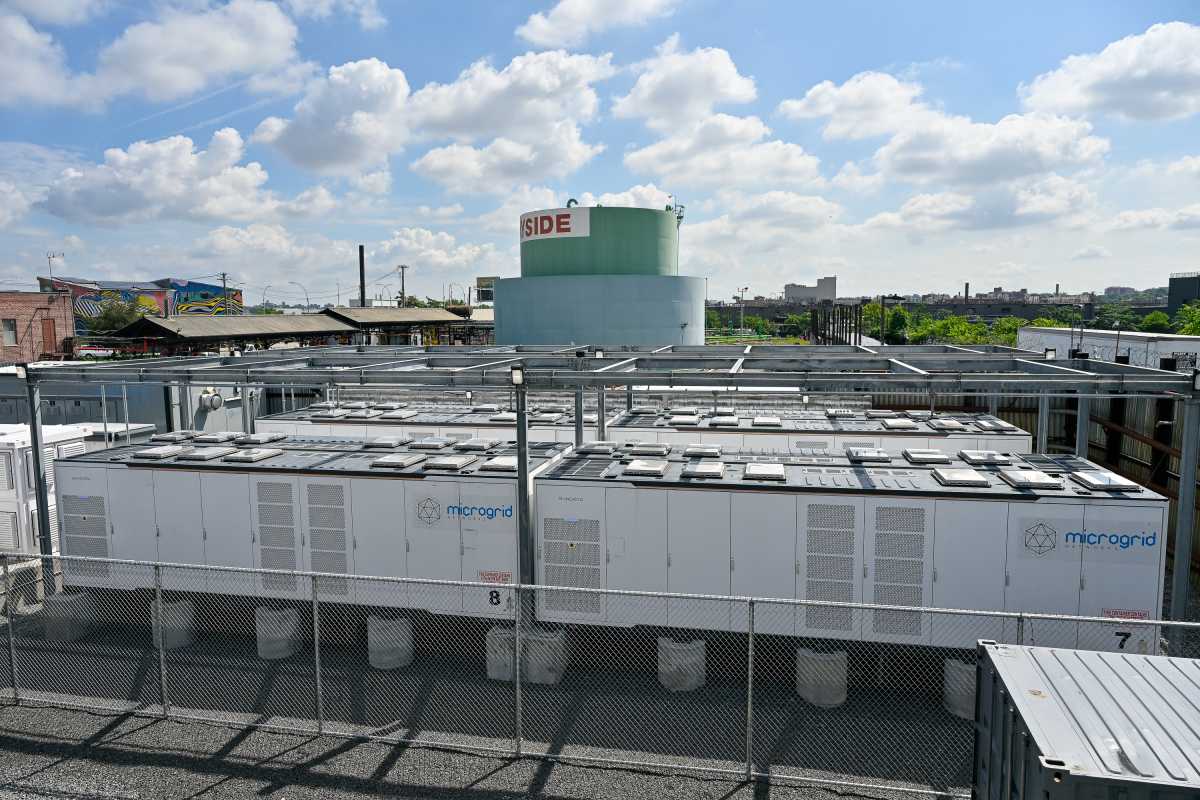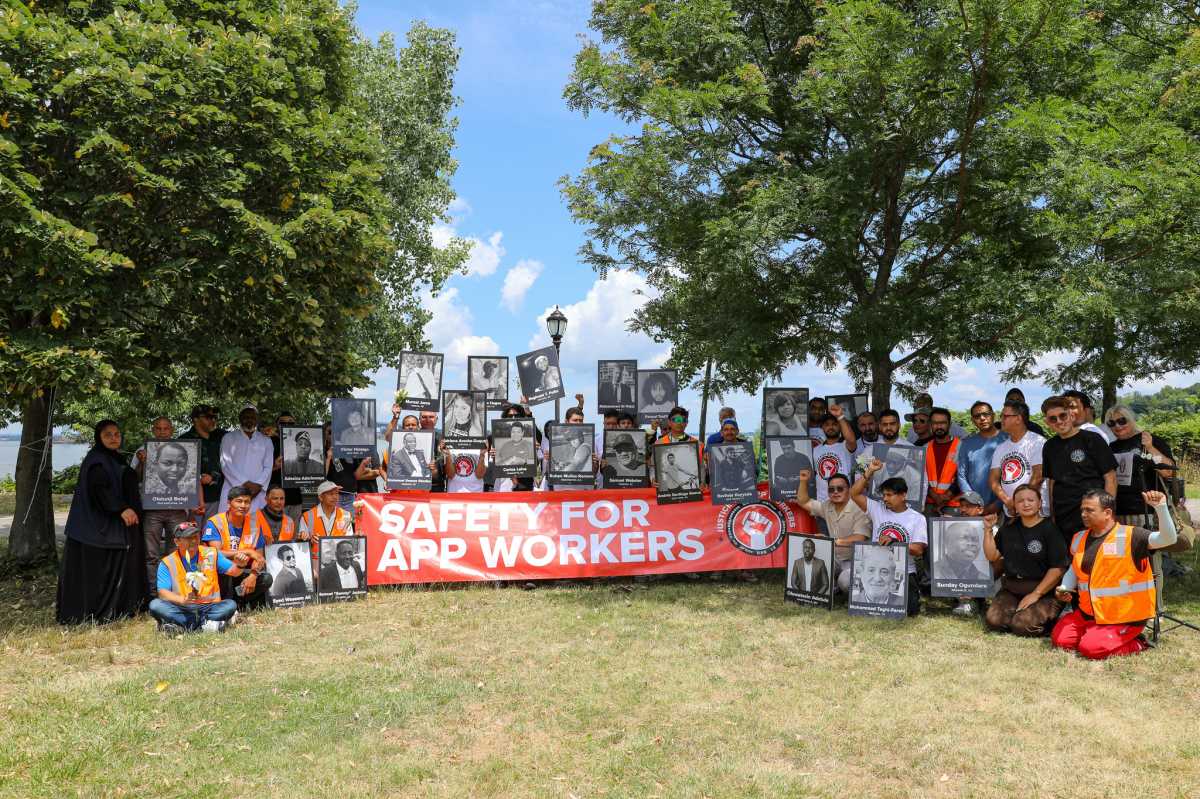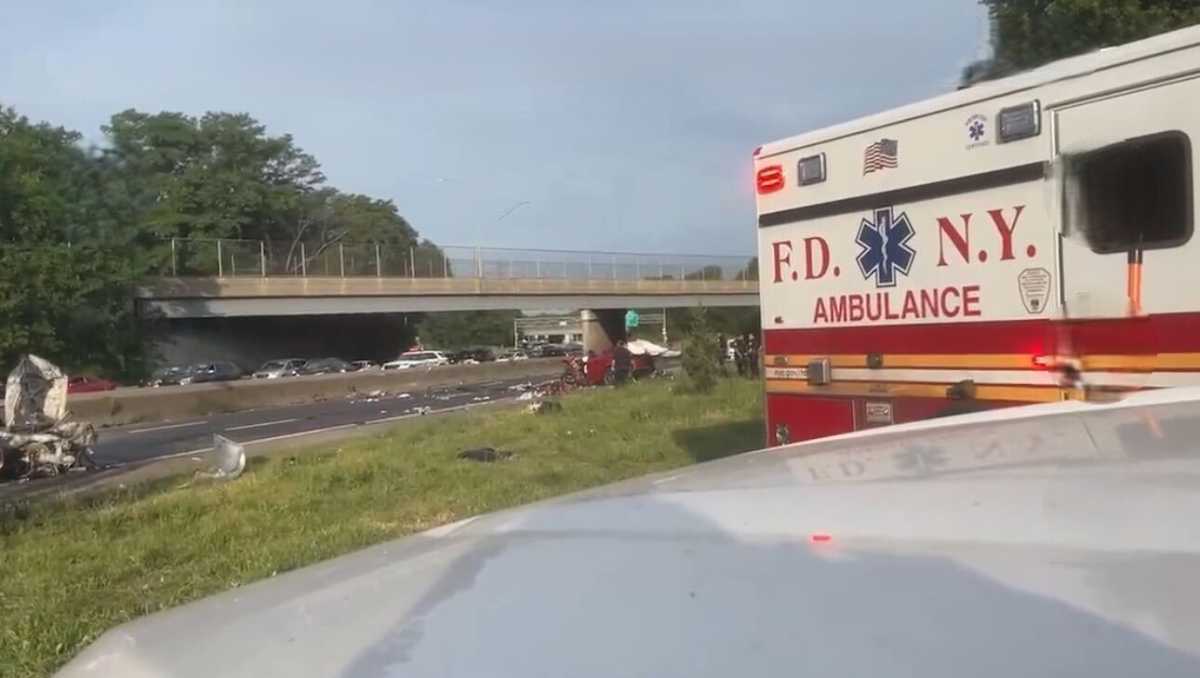
BY ZACH WILLIAMS | Walk down most blocks in the tree-lined West 20s, and you’ll pass at least one large dumpster — a necessary presence during brownstone renovations and luxury condominium development.
They may be curbside markers indicating a robust local real estate market, but few people champion these metallic behemoths. Once obtained, the proper city permit means that building owners will continue to utilize them for the entirety of their sometimes lengthy construction process.
Residents of one building gaze upon a forest-green “20 Yard” dumpster — a trade term referring to the container volume as measured by cubic yards — every morning as they walk down the historic building stoop. The assortment of junk inside includes a couch and plenty of household rubbish.
The ongoing renovations within their building necessitates a dumpster parked right in front of their residence, located on the 200 block of W. 25th St. (btw. Seventh & Eighth Aves.). However, the only option is to keep it there for the time being, according to resident Sean Lee, who added that it appeared near the end of July.
“No one likes a dumpster in front of a building, but it’s New York,” he said.
On the northern side of the neighborhood, a similar situation has reportedly persisted for several months. A tarpaulin protects the top of a “15 Yard” dumpster on the 300 block of W. 30th St. (btw. Eighth & Ninth Aves.).
Similar measures taken elsewhere failed to prevent empty McDonald’s take-out and other litter from accumulating. Beside the W. 30th St. dumpster, a pile of bricks and bags of trash have gathered for several months, rather than atop the tarp.
Consuelo Gonzalez, a six-year resident of a nearby building, did not mince words when she observed the mix of food and work-related waste, as she made her way to church on Aug. 2. One mess attracts another, according to Gonzalez.
“It’s crazy. It’s been there for awhile,” she said before noting the juxtaposition with the lovely nearby townhouses, which comprise the Old Chelsea architectural canon. “The street looks disgusting. We live right there, and it’s beautiful,” she added.
The city Department of Transportation (DOT) issues the permits, which allow real estate developers and contractors to secure space on city streets for dumpsters and other construction-related activities. These permits typically require similar approvals from other city agencies, such as the Department of Buildings (DOB).
While the regulatory process is bureaucratic in nature, West Side residents can express their concerns on dumpster placement by contacting the office of City Councilmember Corey Johnson (212-564-7757). The citywide 311 service can also receive complaints of overflowing or particularly messy garbage receptacles.
“New York City is experiencing a construction boom, and Chelsea is no exception. We must ensure that dumpsters that accompany construction sites are properly permitted, placed and maintained,” said Johnson in an email to Chelsea Now.
Although locals grumble about the potential parking spaces they occupy with impunity, Johnson noted that dumpsters cannot block sidewalks or streets.

A representative of Johnson gave an example of where his office has helped residents mitigate the problems associated with commercial dumpsters, citing the removal of a receptacle placed within a bike lane, near the intersection of W. 14th St. and Eighth Ave. Talks are ongoing, meanwhile, between residents in Hell’s Kitchen and a developer who has attracted criticism for his dumpster’s impact on parking, as well as the noise emitted when it moves.
Johnson’s representative could not provide comment by press time as to the volume of constituent complaints concerning commercial dumpsters. The DOT seeks to minimize disruptions to traffic and pedestrians when reviewing permit applications, according to the department. Stipulations sometimes accompany approval on a case-by-case basis.
Conflict clearly arises because of the placement of dumpsters — but there is opportunity for the needs of construction to inspire a neighborly spirit as well, according to Michael Mansfield, vice president of the co-op board for one building on the 200 block of W. 22nd St., which abuts a brownstone renovation. Concerns for the historic architecture of the building required thousands of pounds of debris travel to the dumpster via the basement of Mansfield’s building, he said.
Laborers have used burlap sacks and pulleys to perform work for two weeks thus far, he added. “The work has to be done,” said Mansfield, who expressed support for the concentration of dumpsters in the West 20s. The “junk” consigned to those dumpsters provided him with a 2×4 piece of lumber, frosted glass, furniture, mirrors and even “great hardware for engines” with little effort, he noted in a subsequent telephone interview. Dumpsters have tangible benefits even if they are not so attractive to behold, he added.
“If I said it wasn’t unsightly, I’d be an idiot,” he said of the one near the front of his building, before adding more generally, “[but] they always have great stuff in there.”




































